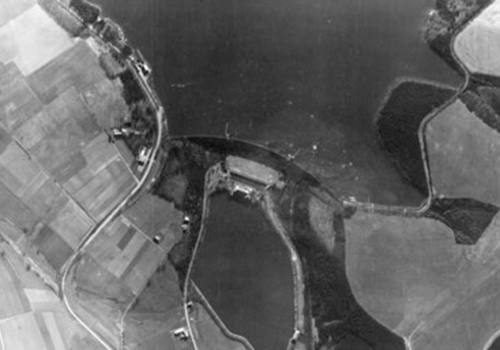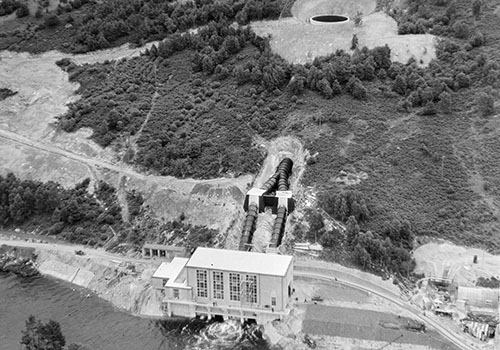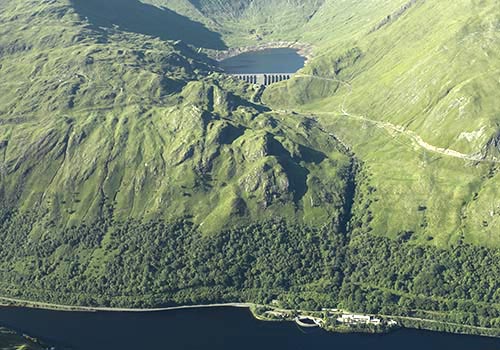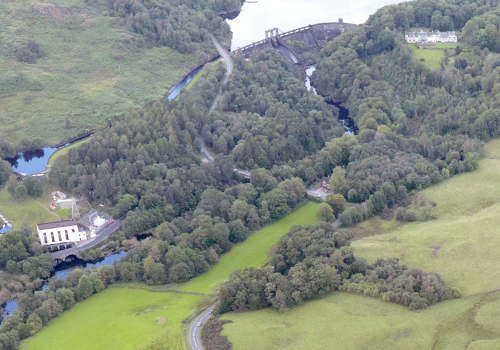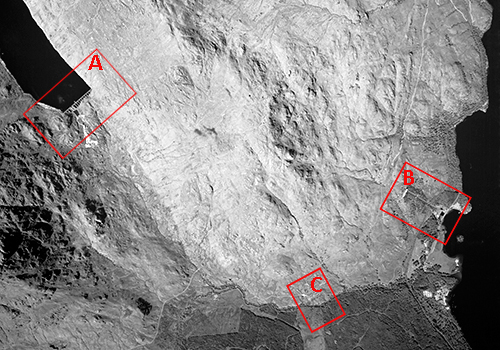Hydro Power Stations
The power of moving water is harnessed to produce electricity in a hydro-power station. By releasing water from a reservoir or by using the constant flow of a river to turn the blades of a turbine, electricity can be generated from this natural and renewable source. The four main types of hydro-electric power plant are discussed below.
Using the Loch Sloy plant as an example, some of the key elements of a hydro-electric power station are examined in more detail below.
|
A. Dam
Valleys and canyons can be dammed to provide a reservoir of water for use in hydro-electric power schemes. The potential energy of the stored water can then be released into the penstocks as kinetic energy. Intakes near the top of the dam channel water into penstocks buried within it. A spillway enables excess water to be released from the reservoir in a controlled manner.
|
 |
|
B. Penstocks and Power Station
Penstocks carry water from the reservoir, through tunnels under the mountain, before emerging at the valve house. Here, the flow of water is controlled and can be shut-off in periods of low demand. In this image, the valve house is visible at extreme right, with four penstocks running downhill to the generator hall at centre left. Each penstock leads to an individual turbine within the generator hall. As high pressure water turns the turbine blades, they cause a connected copper rotor to turn within a series of magnets, producing electricity.
|
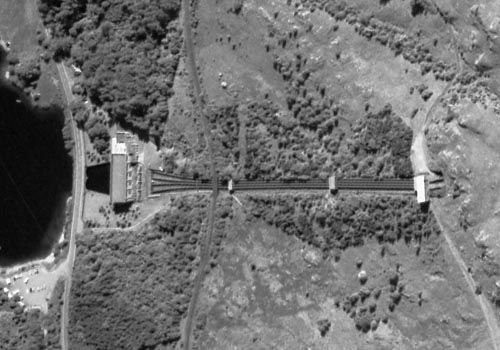 |
|
C. Distribution
Electricity generated at the power station must be immediately distributed to consumers across the country. Transformers step-up the voltage to 400Kv for efficient onward transmission. Normally, power lines are suspended from lattice towers, although they can also be buried underground.
In this image, a transformer yard is visible at centre right. Overhead power cables lead off to upper left through a break in a forestry plantation.
|
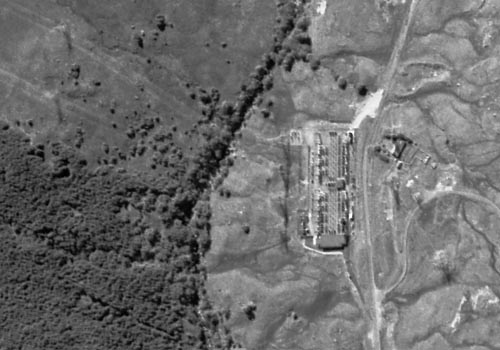 |


